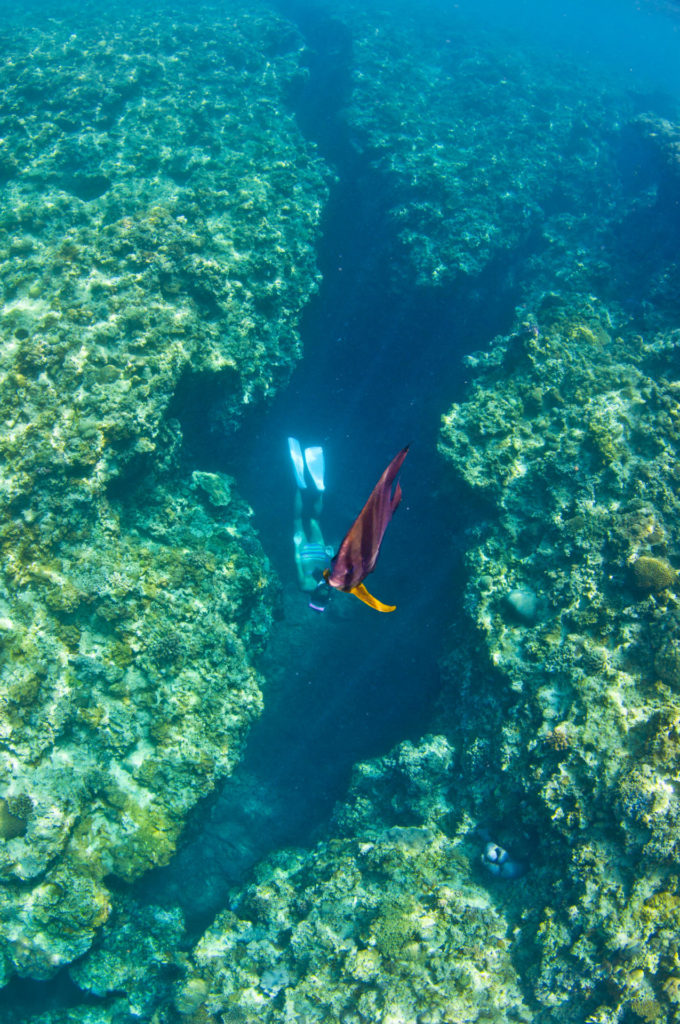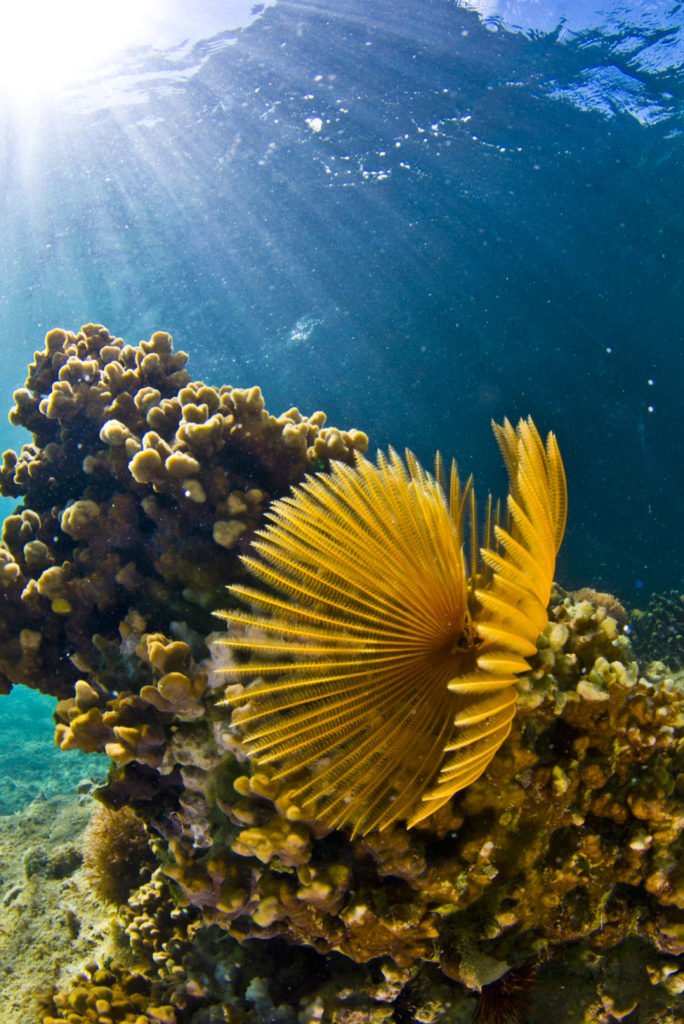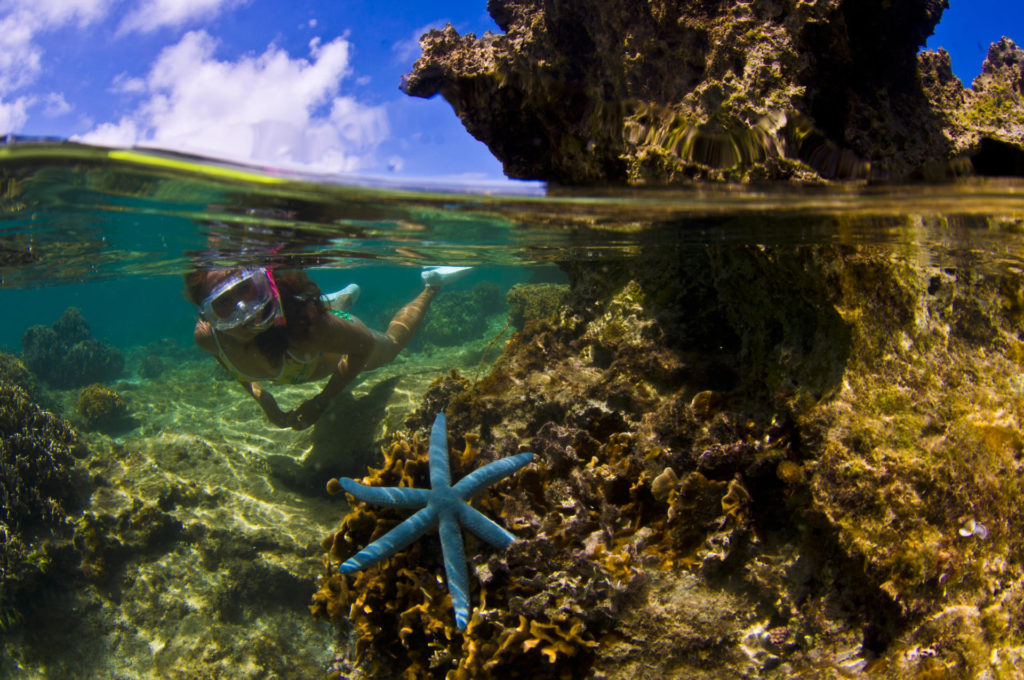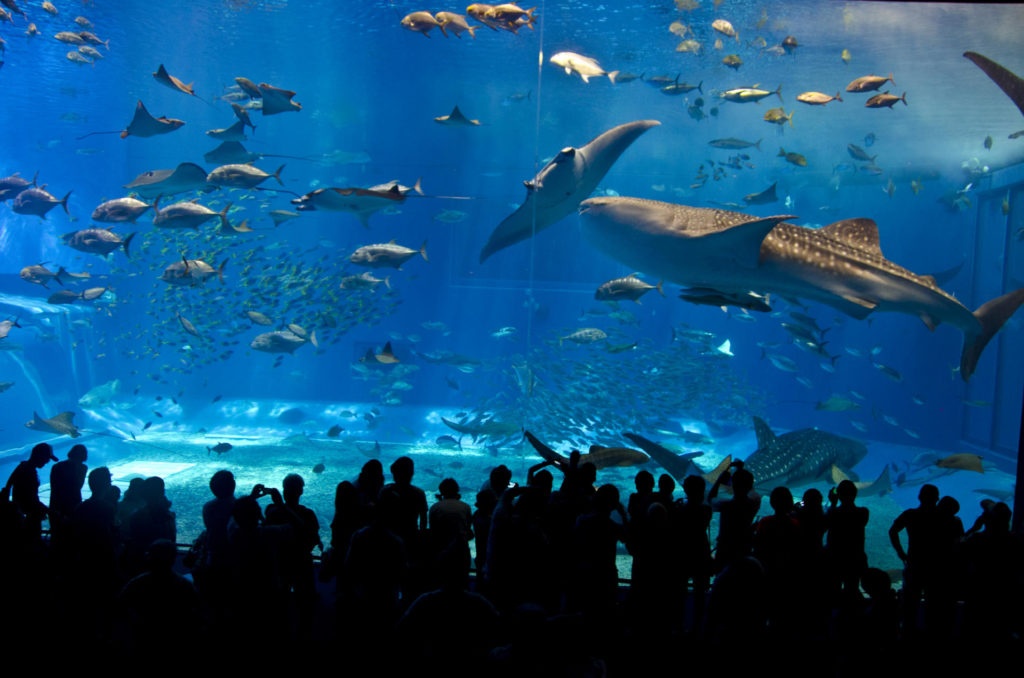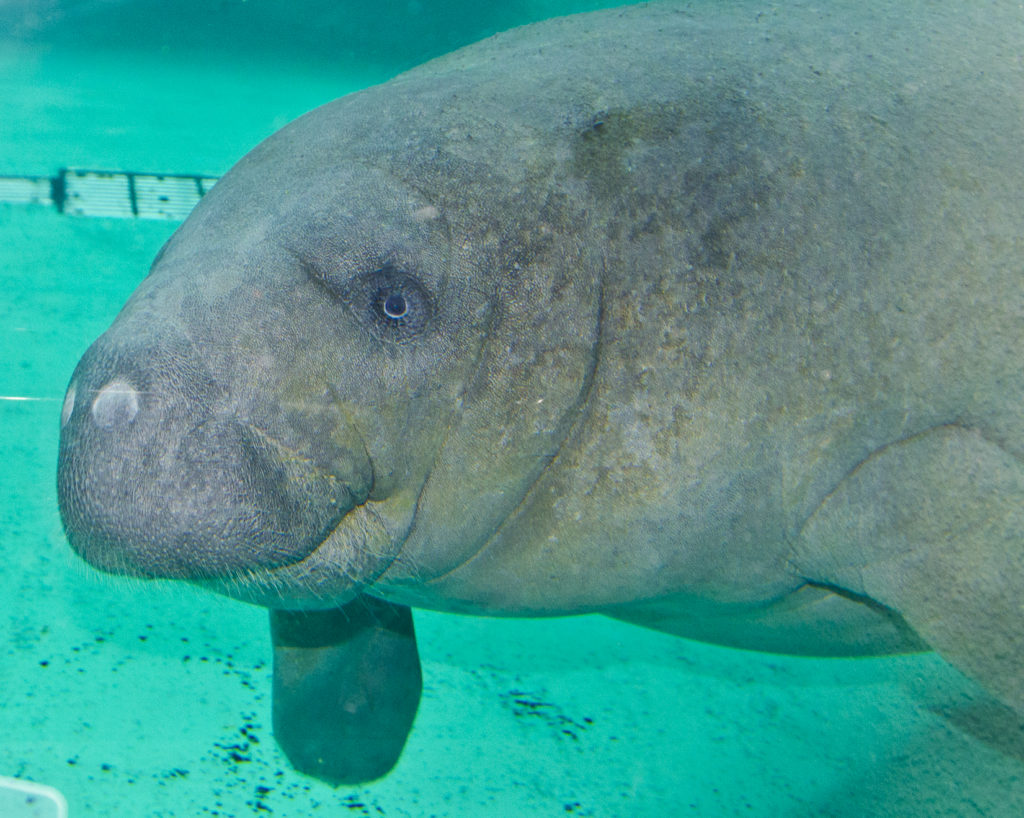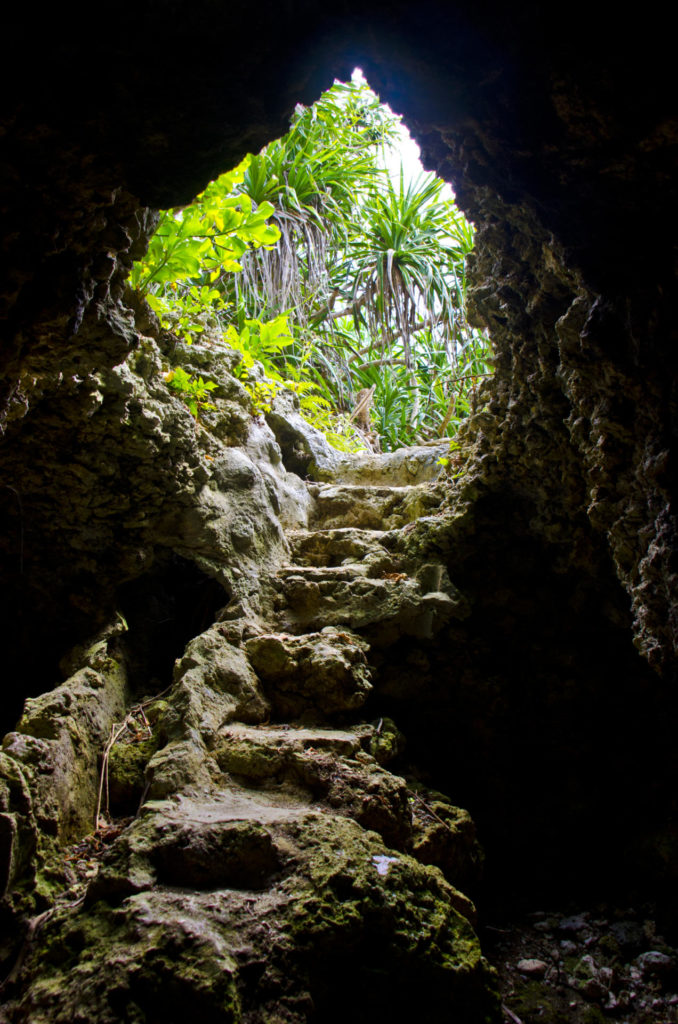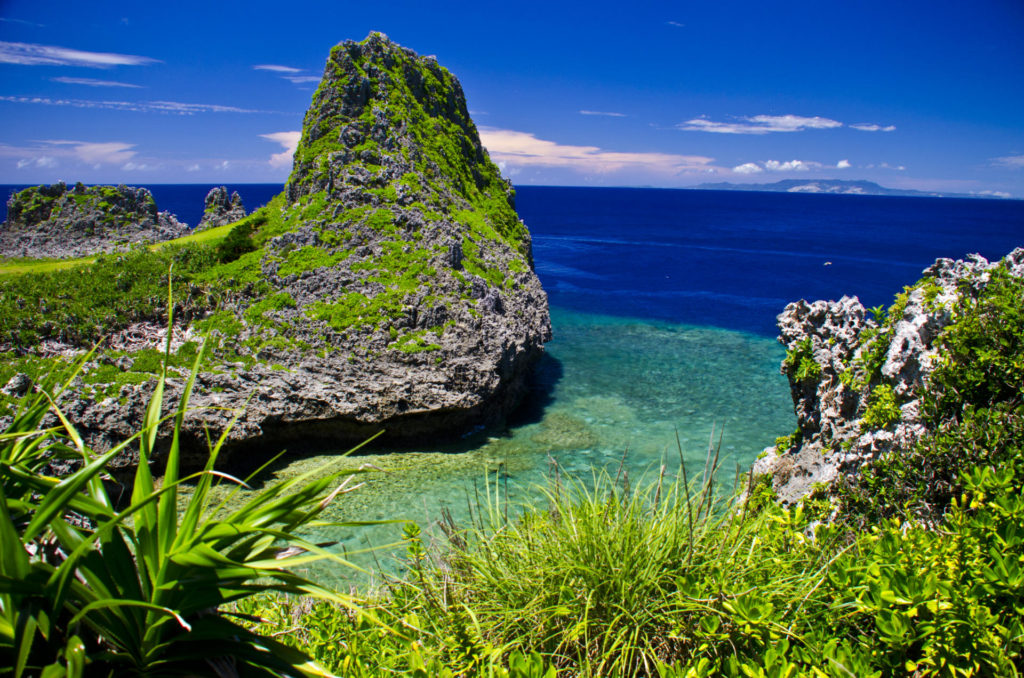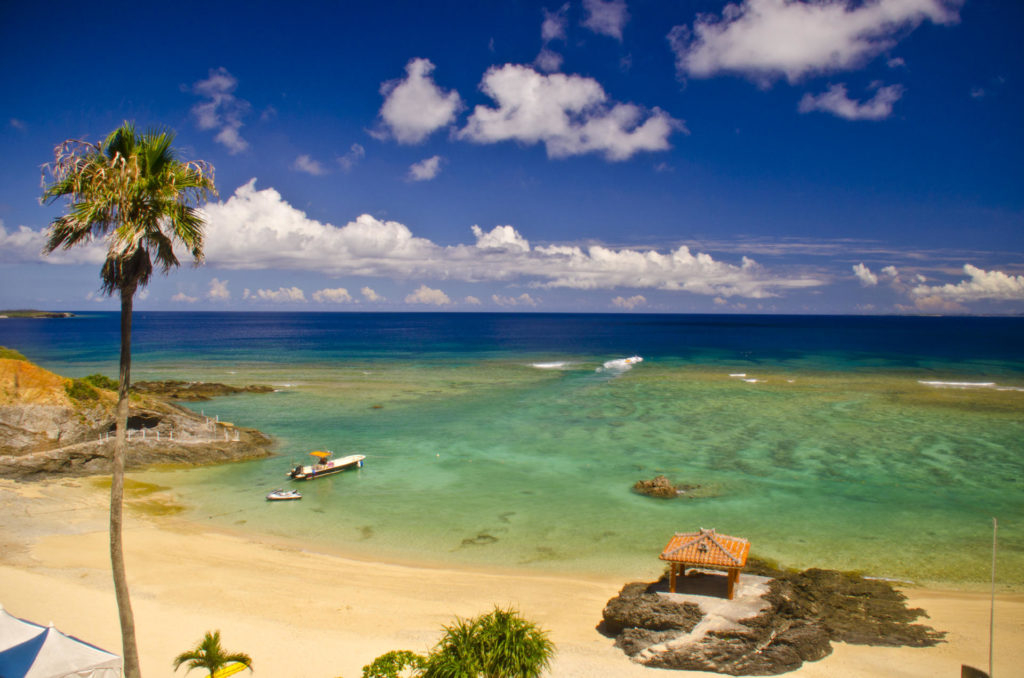Travelers flock to Okinawa’s islands for sun, sand and the undersea attractions. Ishigaki has manta ray stations, Yonaguni submerged ancient ruins and hammerheads, while The Keramas are home to everything from sea turtles, stunning reefs and even humpback whales in winter. Yet perhaps the busiest beaches in this vast chain of islands are on the main island of Okinawa (Okinawa-honto). From Itoman to Motobu, especially along the western shores, and especially on weekends, people snorkel, dive or just cool off in the clear waters of the East China and Philippine seas.
I first heard about driving and diving around Okinawa Island from a friend named Anna Simeon. Anna is a marine biologist based in Guam who studies marine algae. She and a fellow biologist had great success renting a car and some scuba tanks and exploring various dive sites and beaches in search of the marine life they studied.
I decided, why not? Equipped with a borrowed wagon and some help from friends who live in Naha, I was ready to roll. If you don’t have a local contact, car rental shops and island-wide public transport are easily available, and options for places to stay vary from full-blown resort spas to homey pensions and even backpacker hostels.
Why dive the big island? Well, aside from all the amenities available before and after a dive, the island has a nice diversity of marine life including many fish and coral species and even some visits by really big fish such as manta rays and whale sharks.
Beach diving is fun. You can do it on your own schedule without spending a lot of money. Beach snorkeling is even simpler, requiring just a mask, snorkel, fins and perhaps a rash guard. Dive and snorkel season is basically from April to October. Seas get rough and the weather and water cooler in the winter months. But locals don their wetsuits and do it year-’round if the seas are calm.
Okinawa has many places to beach dive and snorkel. It is not a small island, so a car is a must for the independent adventurer. If visiting from abroad, you’ll need an international driver’s license to rent a car and a valid dive card to rent tanks.
Into the Sea
On our first day we drove south, stopping at the market in Itoman to get some fresh vegetables and fruit and some fish for dinner. After the mandatory somen lunch, we headed southwest and clambered down limestone cliffs to watch surfers taking advantage of morning high tide swell.
After getting some good lungfuls of salt spray, we were ready to get wet. We headed to the public beach below the vast Southern Links Golf Course. This area offers some nice protected inner reef snorkeling in a maze of rough coral rocks pocked with passages, swim-throughs and overhangs.
The reef held starfish, various gobies and sapphire chromis fish and some fat pufferfish. Hard corals, including some beautiful purple star corals, dot the reef. As we snorkeled near the golf course cliffs, we found quite a few stray golf balls before exiting near a snaking cliffline road.
We stopped at the southeastern shore of Okinawa-hontoō at Mibaru Beach, which stretches well over a kilometer. That evening we stayed at a modest pension our friends operate on weekends, ate our fish and enjoyed good conversation and spirits.
The next day we headed north for some beach-entry scuba sites. In Okinawa, dive shops have tanks for rental, but there are also many filling stations. These are businesses, sometimes located in residential neighborhoods, that rent filled tanks for the day or the weekend.
Cheaper than buying a tank and getting refills, many divers just rent and return. We did this as well, stopping in the Chatan area for tanks and then taking a nice morning drive to a secluded area in scenic Onna.
The roads in Okinawa are in great shape and well-marked. Getting to a site is normally easy, although it can take a bit of local knowledge to find smaller roads to the final destination
We arrived at a rugged overlook of a favorite dive site called The Horseshoe. Nearby was a site with a less appealing name called Toilet Bowl. Entry is by either a rugged hike through a limestone cliffline or through the jungle past pandanas trees to a secluded beach. Our plan was to dive as close to high tide as possible, as unpredictable currents can occur to make this site best suited for advanced divers.
It was Sunday, and many Japanese and military divers were there. The tide was coming in, and we made a surf entry by the outer reef. The payoff is a series of beautiful crevices and an underwater wall that teems with marine life including barracuda, damselfish, sapphire tangs, sea turtles and even the occasional reef shark. It is a difficult dive due to strong longshore currents at times, so we were glad to have our local friends to follow.
One note of caution on land at these remote dive spots; thieves do prey upon vehicles here. They go only for cash and are quite slick at quickly breaking into a car. Bring a waterproof container for your cash and carry it in your BC. The stories of break-ins to the cars of shore divers are plentiful.
The Hot Spot
You can’t say you have dived Okinawa unless you’ve been to Maeda Point. This is where planeloads come every weekend to do all kinds of diving, instruction and snorkeling. It is so popular, there’s a gated pay parking lot and a huge food and change facility on the grounds with a nice sheltered overlook of the entire bay.
Entry is easy with a wide set of stairs leading down the cliffline to the ocean. Before suiting up at the point, check the conditions. Don’t dive at Maeda Point if the surf exceeds a foot. The facility managers are supposed to close the entry if surf conditions are bad, but that seems to be a subjective call so, if the surf isn’t slapping your shins, go by boat.
The stairs from the parking lot lead to the waterline. Divers spread out here and climb carefully down to the water. To the right of the reef’s edge, the depth is about six meters; to the left over the reef, it’s about 30 meters. There are a lot of divers at Maeda Point, but there’s also plenty of fish.
In late June and July, there are beautiful silver swirls and clouds of sardines and other baitfish attracting predators and even dive-bombing sea birds. Look for moray eels, sea snakes, sea anemones with their clownfish, lionfish, shoals of squid and large batfish schools. Save some energy for the exit and the climb back up the stairs.
The main island is great for seeing other ocean-related attractions too. The world-famous Churaumi Aquarium is about two-and-a-half-hours drive from Naha past Motobu, and it is pretty much a full-day excursion. In the massive main tank — the world’s third largest — is an amazing collection of marine life.
Guests can see three whale sharks, a dozen mantas, even common dolphins, molas and yellowfin tuna. The aquarium is a member of SECORE, a worldwide group that studies coral reef health and farming. Churaumi’s five-segment coral reef tank is one of the showplaces for the facility’s groundbreaking work on hard coral reproduction.
Separate tanks hold big sharks, old-growth sea turtles and even manatees. The dolphinarium has daily shows, and nearby Emerald Beach is available for some cooling off and snorkeling. In the main rest area, the facility has added many new displays with immense skeletons of whales and other marine life, along with the remains of an extremely rare megamouth shark.
Diving into Naha
The shopping, food and nightlife on Kokusai Street is legendary. Aside from the usual Okinawa offerings such as taco rice, Okinawa soba and Orion beer, there is a nice selection of bars along side streets. A couple favorites included The Dojo which is adorned with portraits of Okinawa martial arts masters, and the cozy Baku Craft Beer House.
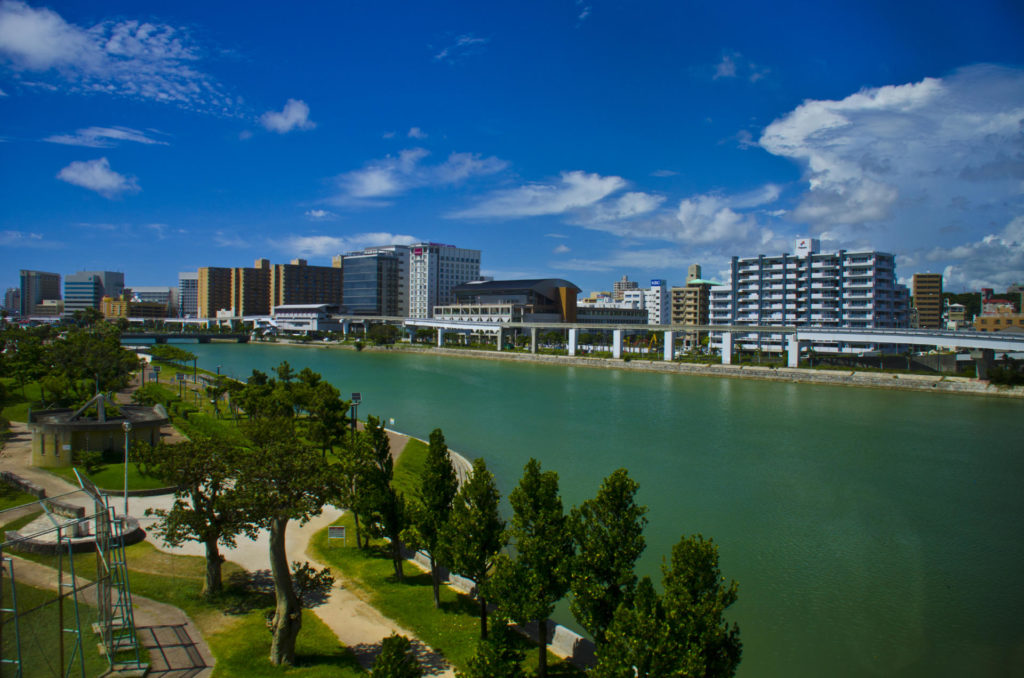
Specialty shops sell collectable beads, African art and snakeskin shamisen (a kind of Japanese banjo). One place divers will like is Kaisou. This gift shop chain has five locations along Kokusai Street, each a little different from the next, selling eco-oriented T-shirts, carved necklaces of ocean icons and some Okinawan-themed items.
The convenient tram can be accessed at many points along the street and taken all the way to Shuri Castle perched high above Naha. The relic, dating back to the 1300s, has been professionally restored with vast grounds and landscaping. The castle presents daily shows of traditional plays, costumes and music. Enjoy cool breezes while marveling at how the huge stones were carried up the hilltop in ancient times to make the castle.
Onna and Environs
After getting our fill of the city, we headed north to the Onna area where we met Jan Claudius Weirauch of Piranha Divers. He suggested an old pension for us to stay nearby. It had nice wooden floors and a picnic table out back shaded by a fir tree where we sat and enjoyed the view of the setting sun.
From the wooded neighborhood, it was a short walk to Inbu Beach. Snorkeling there, we saw the sandy bottoms produced small, blue-spot rays and coral patches with an array of tropical fish.
Jan also took me to Maeda Point by boat, which leaves out of a marina a bit north of the point. It was just me and two other divers. We cruised along the cliffline and tied up to one of the many buoys. It was there I saw a large batfish school, parrotfish and some deep crevices lined with sea anemones.
Aside from having to keep an eye out for boat traffic when surfacing, diving by boat is a considerably easier way to see the reef here but does require more logistics. At the marina, I noticed a lot of people going back and forth on public bicycles. The bathroom was far from the dock, and divers made good use of the bikes, with some still in wetsuits pedaling faster than others.
The villages along the main coastal road are pleasant, and I found one eclectic restaurant full of antiques and a real Formula 1 car parked inside — on the second floor! We ordered tacos and cold beer. What else could a diver want? Next door was a nice gift shop with some clever mobiles made of local beach shells and driftwood.
In all, we explored about 10 dive and snorkel sites, but there must be a hundred of them along this long and varied terrain of the island’s western coast. It was a fun and unfettered trip that allowed me to see some of Okinawa’s diverse reefs.
Next trip, I suspect I’ll be a bit more adventurous and hit some of the more popular offshore sites by boat that include islands, sea mounts and shipwrecks. But for divers and snorkelers who have visited popular dive destinations such as Bonaire and Guam, we know shore diving is a real bonus you can’t find on every island. Okinawa is blessed in this regard and well worth a try.
Okinawa Island Beach Diving Tips
- Don’t go in unless the ocean is calm.
- Use a car big enough to hold snorkeling or dive gear.
- Rent tanks from fill stations or dive shops.
- Do not leave cash in the car.
- Bring fresh water in a large jug and leave in the shade for a nice shower after the dive or snorkel.
- Avoid the crowds and go during the week.
Okinawa Island’s Top Beach Diving
Snorkeling Sites
- Maeda Point: The island’s Mecca for diving and dive training.
- Maeda Flats: Not so crowded and good for diving and snorkeling.
- Sunabe Sea Wall: Walk out of a dive shop and into the sea.
- Horseshoe: Advanced diving with rewarding marine life.
- Devil’s Cove: Good place for snorkeling and octopus.
- The Junkyard: Long swim but worth the time; lots to see.
PRACTICALITIES
Getting There: Okinawa Island is most easily accessed by air and there are numerous domestic flights from which to choose, including low-cost carriers from Tokyo and Osaka. International flights are also becoming more common, especially from Taiwan.
Entry Requirements: Valid passport.
Climate: Mild and sometimes rainy winters and hot summers. Average air temperature is 25˚C, with the highest average at 32˚C in summer. The sun can be intense, so wear sun block.
Water Temperature: In the islands, 22˚C in winter to 30˚C in summer. Okinawan water in summer can be warm on the surface, so snorkelers can just use a rash guard. But at six meters, it can cool off, so a 3-meter suit is best for divers.
Accommodations: Accommodations vary greatly from modest pensions and some backpack hostels in Naha to upscale resorts and spas along the western coast.
Money: Local currency is the yen. Credit cards are widely accepted at hotels, but you may find small shops and restaurants prefer cash. Gratuities are not customary in Japan. Gift-giving is appreciated.
Getting Around: In Japan drive on the left side of the road. An international license is required for driving or renting a vehicle. Renting a scooter is also an option. Bus service is available to most of the main towns and attractions on the island. There is a major tram from the airport to stops in Naha’s tourist and hotel districts.





